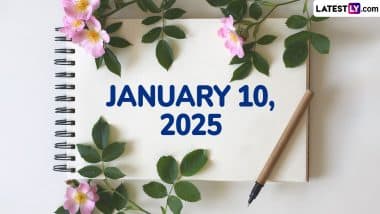One good way of making people accept a product or service easily is by making it local. With the use of native languages to provide their offerings, companies localize their products and services in different regions. The language tool is one of the biggest tools being used to drive the Indian online landscape today. In this article, we will discuss some of the ways regional languages are improving the online landscape.
The Impact of Regional Languages on Online Gambling
The Indian gambling market is one of the fastest-growing and biggest sectors in the entertainment industry. In recent times, it has set records in the global gaming market.
Indian gaming companies are using major developments to improve the gaming experience. For instance, access to better internet connections and affordable digital facilities like smartphones has accelerated the growth of online games in India. However, with a bulk of about 1.3 billion population, a huge amount of the undigitized populace reside in the small towns and villages of India.
Online gambling companies can create gaming offers to suit Indian specifications. This involves providing and converting their games to Indian local languages, thereby making online gambling platforms available to interested Indian gamers. With the large untapped segment of the Indian populace, the Indian gaming market offers great potential. Hence, digital companies are open to bigger prospects.
Several online gambling platforms offer Indian regional language options which attract customers, thus increasing their user engagement. Some of the games they offer, such as the lightning roulette game, also have their interface available in Indian languages. This means you can make bets, change settings, and do a lot more in local languages.
Regional Languages and E-commerce Revolution
With the large number of Indian internet users, only 1% of the population are native English speakers. A huge percentage of internet content appears in the English Language. Indian regional language speakers yearn for an internet language they can identify with.
A report shows that in May 2020, Indian rural residents had 2 million active internet users more than their urban counterparts. Another research by IAMAI and IMRB International proves that Indian regional content can boost internet growth by 24%. Also, 90% of the 70,000 print newspapers available in India are printed in local languages.
Regularly, the regional language speakers require assistance in carrying out day-to-day e-commerce transactions such as bill payments, online banking transactions, and online shopping. Most e-commerce industries have incorporated regional languages into their portal to aid local language speakers. For instance; the Oxford Universe Press recently introduced an online dictionary in two local Indian languages. Also, Indian locales can now book tickets at the Indian Railways in Hindi.
Currently, other e-commerce industries and organizations continue to incorporate Indian languages into their portals. The Indian regional language-speaking population is no doubt, a wide market with huge opportunities.
Unlocking Opportunities through Regional Language Content
There is a lot of potential to be harnessed through regional language content. Its positive influence cuts across various sectors including news, lifestyle, education, and entertainment.
Creating local language content gives a sense of belonging to the regional language internet users. It bridges the gap between the local and English internet users in the community, thereby bringing people together. Local contents give users a feeling of connectivity with their root and promote cultural diversity.
In addition, regional language content opens up promoters, marketers, and influencers to new advert strategies. These regional language users have peculiar taste and interest that varies from the common needs of English internet users. Therefore, local influencers and promoters are constantly on the lookout for better ways to restructure their marketing approach. This is to enable them to promote contents that appeal to local internet users.
Currently, virtually all social media platforms like YouTube and Facebook support regional languages. Google shows that 90% of new Indian internet users consume content in regional languages. This reveals that a bulk percentage of Indian internet users prefer content in the local language. Also, with access to cheap data and smart mobile phones, penetration into the internet is on a speedy rise.
Local users can also take advantage of the internet and technology in their daily lives for self-development and continuous learning.
Breaking Barriers and Paving the Way Forward
Though regional languages seem to have great potential, there are still a few roadblocks. Regional Language content can be hindered due to some factors including poor technological infrastructure, poor content, and localization.
GroupM's Mihir Sangani opines that the major challenge to the regional language internet is the discoverability of content. Content creators encounter difficulties in getting search algorithms to help discover regional content. Niraj Ruparel of Group M reports that translation to regional languages is also a challenge.
Content creators and influencers can go the extra mile in learning a little chunk of the Indian's local language so that they could make content available to local internet users.
The constant rural-urban drift in search of greener pastures has led to the neglect of regional languages. Internet users who migrate to urban areas change to speaking the English language which is viewed as an official language. Hence, the decline in the use of regional languages.
However, organizations and corporate bodies should ensure that they normalize speaking local languages in a formal setting. Also, the use of regional languages on business websites, and advert placements like flyers, billboards, etc, will promote regional languages on India's online landscape.
Another major challenge is the lack of technological infrastructure. Most Indians still lack access to adequate digital infrastructure and internet services. Government initiative programs like the 2015 Digital India campaign can help in making several internet applications available to regional users.













 Quickly
Quickly




















